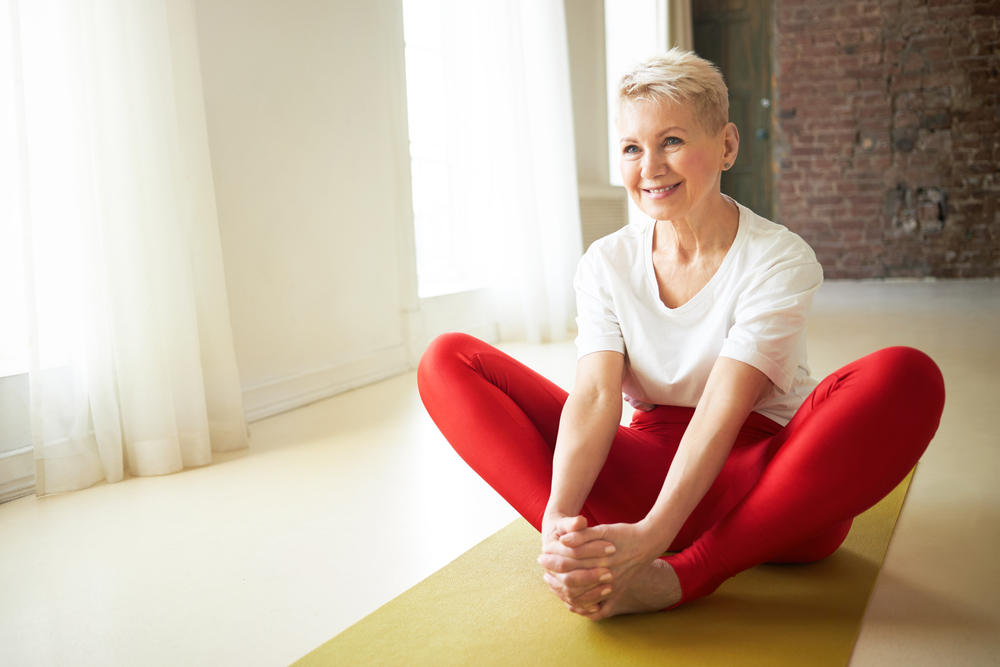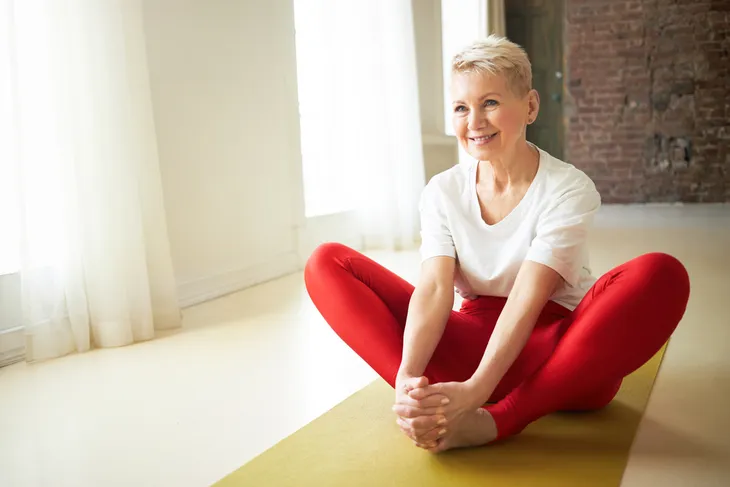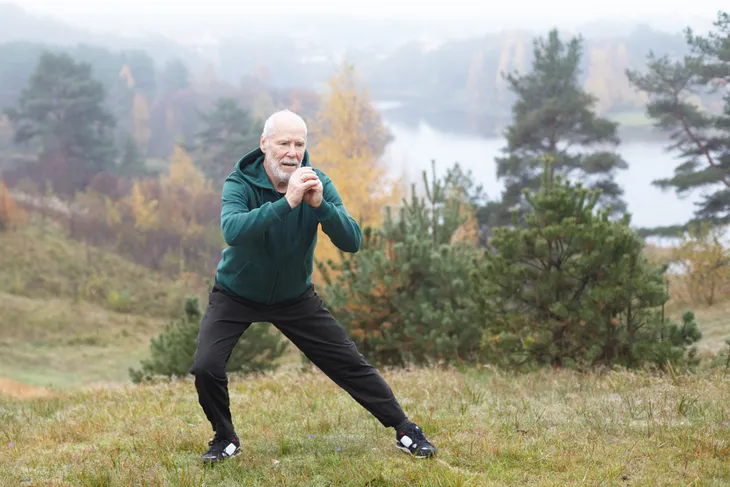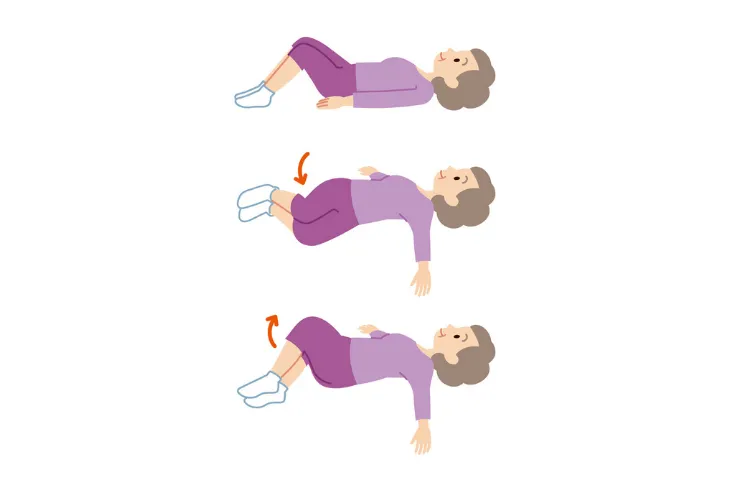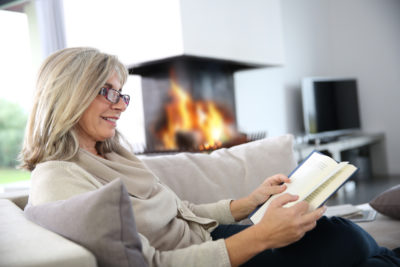Did you know that nearly one in four adults over the age of 60 will experience hip pain? There are several causes of hip pain in seniors from experiencing a fall to arthritis, tendinitis, bursitis, and more. Severe hip pain can be debilitating and may even keep you from doing things you love. Thankfully there are ways you can help relieve some of that pain.
Basic treatment for hip pain includes rest, over-the-counter pain relievers, and cold and hot compresses. But that’s not all. Stretches and certain exercises for hip pain can also help relieve the discomfort as well as increase mobility and strengthen muscles. If you’re ready to find some relief check out these 10 senior stretches and exercises for hip pain!
Want senior content delivered straight to your inbox? Sign up for our exclusive email list and receive articles and news on diet & nutrition, fitness, and mental health dedicated specifically to our senior audience!
Pigeon Pose
The pigeon pose is a great stretch that opens the chest and can help relieve congestion. It’s a great pose for stretching the hips. Since this pose is performed on the floor we recommend using a cushioned mat.
Begin on all fours and then slowly bring your left knee forward, placing it behind your left wrist and your ankle near your right hip. Straighten your right leg behind you and allow your upper body to fold over your left leg but only go as far as you can comfortably. Take a few deep breaths while feeling the stretch and then return to the starting position. Repeat with the opposite side.
A quick tip: You can place a pillow under the knee for extra support.
Kneeling Hip Flexor Stretch
Not only will this stretch help hip pain but it can also help alleviate lower back pain too. The kneeling hip flexor stretches the front of the pelvis and helps align your legs and improves your posture.
Since this stretch is performed on the floor we recommend using a cushioned mat or soft carpet for support. Begin in a kneeling lunge position. One knee should be on the floor and the other knee bent at 90-degrees in front of you. Place your hands on the front of your knee or your hips for support.
Next, squeeze your glutes and shift your body weight forward while keeping your torso upright. Lean forward until you feel a comfortable stretch through your groin and top of the thigh. Move back and forth in controlled movements five to 10 times and hold each position for 30-seconds. Repeat with the opposite side.
Standing Hip Extension
Hip extension exercises are great for improving your hip extensor muscles (the glutes and hamstrings). Maintaining strong glutes is vital for pelvic alignment and lower back support whereas strong hamstrings are important for walking.
To perform a hip extension exercise, begin by standing upright with your feet about shoulder-width apart. Extend both arms in front and hold onto a chair or table for support.
Next, keep one leg straight while lifting the other leg backward without bending the knee. Lift the leg back as far as you can do so comfortably and then clench your glute muscles while holding the position for about 5-seconds. Repeat five to 10 times and then repeat with the opposite leg.
Hip Bridge
The hip bridge is a great exercise to strengthen your glutes and hamstrings but it is also great for improving hip mobility and strengthening your lower back. This exercise is performed on the floor so make sure you grab a cushioned mat or perform it on a soft carpet for support.
Begin by lying on your back with your knees bent and feet about hip-width apart. Slowly lift your pelvis and hold this position for about 5-seconds. Ensure your upper body stays flat on the floor while lifting your pelvis. Then slowly lower back down. Try to repeat this exercise five to 10 times.
Knee Lift
This stretch promotes better alignment and posture and may also help improve your balance and coordination. This is another exercise performed on the floor so we recommend using a cushioned mat for support.
Start by lying on your back with your legs extended and flat on the floor. Keeping one leg straight, begin to pull the other knee up toward the chest, placing both hands on the top of the knee to pull it closer to your chest. Hold this stretch for about 10 seconds before letting go of the knee and lowering it gently toward the floor. Repeat the stretch 5 to 10 times per leg.
Seated Butterfly Stretch
The seated butterfly stretch is a great exercise to stretch your inner thighs, hips, and lower back. Since you’ll be seated on the ground we recommend performing the stretch on a cushioned mat or soft carpeted area.
Begin by sitting on the floor. Ensure your back is straight and your abs are engaged. Next, bring the soles of your feet together and grasp your feet and ankles while slowly leaning forward. Only lean as forward as you can do so comfortably and ensure your spine is straight. Then place your elbows on the top of your thighs and gently press down until you can feel the stretch. Hold this position for 10 to 30-seconds.
Chair Stand
For this exercise, you’ll need a sturdy chair. Begin by sitting on the edge of the seat with your knees bent and feet flat on the floor. Next, cross your arms and place a hand on each shoulder. Alternatively, you can keep your arms at your sides — whatever is more comfortable.
Then stand up slowly and be sure to keep your back, shoulders, and head straight. Slowly sit back down to return to the starting position. Repeat this exercise five to 10 times.
Lateral Squat
Begin by standing with your feet double shoulder-width apart. Place your hands on your hips or clasped in front of you — whatever feels comfortable. Next, shift your weight to your left leg and push your hips back just like you’re going to sit in a chair.
Drop as far as you can while keeping your right leg straight. It’s important that your chest stays up and keep your weight on your left heel. Finally, return to the starting position before repeating with the opposite side. Try to repeat five to 10 times per side.
Side-Lying Leg Raise
Leg raises can help improve your range of motion in the hips. It can also help you have better body stabilization and improved muscle endurance. Grab a cushioned mat before starting this exercise.
Lay on your left side on the mat with your legs straight and on top of one another. Use your elbow to prop your head up. Engage your core and then left your right leg straight up as far as you can do so comfortably. Then, slowly lower the leg down. Repeat five to 10 times and then repeat with the opposite side.
Double Hip Rotation
This exercise is excellent for strengthening the hip external rotators which can improve stability and help prevent injuries in the hip. This is another exercise performed on the floor — so grab a cushioned mat before starting.
Begin by lying flat on your back and bend your needs bringing them toward your body with your feet flat on the floor. Next, gently rotate the knees to the right and lower them toward the floor. Then rotate your head to face the left while keeping your shoulders flat on the floor. Hold this position for 20 seconds then slowly return to the starting position. Finally, repeat on the opposite side.
